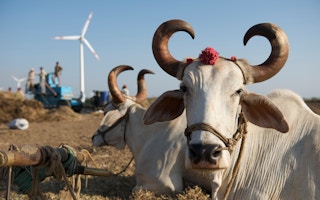New analysis from global energy think tank Ember revealed that solar and wind drove the majority (92 per cent) of India’s electricity capacity additions in 2022, while coal accounted for only 5 per cent.
The analysis tracked monthly progress of Indian states and Union Territories against 2022 renewable energy targets, using data from India’s ministry of new and renewable energy.
According to the report, India’s solar and wind additions increased the country’s renewable generation capacity by 15.7 GW, 17 per cent above additions in 2021. The additional capacity is comparable to the size of the UK’s entire solar capacity as of 2021. Coal capacity additions amounted to less than 1 GW, 78 per cent less than the addition in 2021, the report added.
The analysis found that Rajasthan and Gujarat emerge as the top two states with the most renewable electricity capacity additions in 2022, led especially by solar. The two states added 8.6 GW of solar, which is greater than Türkiye’s entire solar fleet as of 2021.
The state of Rajasthan installed an additional 6.7 GW of solar and wind capacity in 2022. This addition accounts for 43 per cent of India’s total solar and wind capacity deployments last year. This was the largest ever annual combined solar and wind capacity addition at the state level in India’s history, found the report.
“
As the country presides over the G20 presidency this year, India is well-positioned to take climate leadership as a prime example on the possibilities of enabling clean power generation by unleashing solar and wind power.
Uni Lee, data analyst, Ember
Gujarat installed 3.1 GW of solar and wind in 2022, about half of Rajasthan’s installations. The analysis also revealed that Gujarat now has 18.5 GW of clean electricity capacity, surpassing its planned target for the year.
The analysis also projected that the growth in renewable generation capacity will continue to be concentrated in Rajasthan and Gujarat. Rajasthan and Gujarat aim to reach 90 GW and 61 GW of renewable capacity by 2030 respectively. To reach these targets, Rajasthan will have to deploy about 8.6 GW and Gujarat 5.4 GW of renewable capacity annually for the next eight years, the report estimated.
If these 2030 targets are realised, renewable capacity in the two states will account for one-third of India’s total renewable capacity target of 450 GW by 2030, most of which is solar and wind.
“India, especially the states of Rajasthan and Gujarat, have demonstrated to the world that rapid deployment of solar and wind is not only possible, but also already happening. As the country presides over the G20 presidency this year, India is well-positioned to take climate leadership as a prime example on the possibilities of enabling clean power generation by unleashing solar and wind power,” said Uni Lee, Ember’s Asia data analyst.










